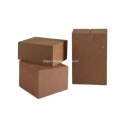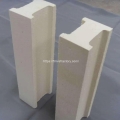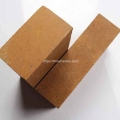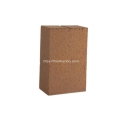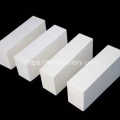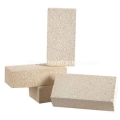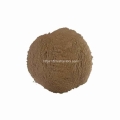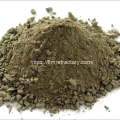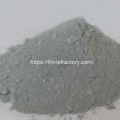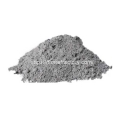- Performance. Innovation. Worldwide. Your trustworthy Refractories Manufacturing Partner--Fireramo
- +86 175 3769 7777
Contact
Contact us on WhatsApp
High Quality Refractory Bricks
Insulation Bricks for Sale
Monolithic Refractory
Refractory castables in cement kilns damage common causes and solutions
Cement kiln is one of the core equipments for cement production, and refractory castable is an important material to protect the inner wall of cement kiln. However, refractory castables are often damaged due to the extreme conditions of the working environment and long-term high temperature effects. This article will introduce the common causes of refractory castables damage in cement kilns and provide corresponding solutions.

Refractory castables for cement kilns damage common causes
Refractory castables are widely used in cement production industry because of their low production cost and convenient construction, and their normal service life is usually more than one year.
Anchor falling off causes castables to fall off
In the process of using the castables, the anchors can keep the integrity of the castables and increase the bending resistance of the castables. In the place where the castables fall off, the anchors and roots fall off in many places, which is obviously due to the rake nail welding at the welding point resulting in the sheet fall off of the castables.
Thermal shock stress (repeated drastic changes in temperature) leading to rapid damage of the castables
Cement kiln will experience cyclic heating and cooling process when working, which will lead to the temperature difference between inside and outside and generate thermal shock stress.
Taking the cooling belt of rotary kiln (especially at the kiln mouth) as an example, this part is not only subject to the continuous erosion of clinker, but also subject to the continuous influence of the secondary air and high temperature clinker in the kiln. Repeated cyclic temperature rise and fall leads to thermal fatigue in the surface layer of the castables, which will cause cracks and fractures in the refractory castables, which in turn leads to damage.
Chemical attack
A large number of chemicals such as limestone and silica are present in cement kilns. These substances will have a chemical reaction with the refractory castables and produce corrosive substances, which will make them lose their original structural stability and eventually lead to damage.
Structural reasons
Refractory castables have a set of strict construction requirements, which must be operated according to the requirements to ensure the good physical properties of the castables. If the construction requirements of refractory castables are violated during operation, the amount of water added is not well controlled, or expansion joints are not reserved (in general, the expansion joints should be kept every 1.5m), it will inevitably cause great damages when heating up.
Kiln operation abnormalities
In firing or kiln stopping, kiln skin peeling and other abnormal production conditions, there is often a sharp change in temperature, resulting in huge internal stress in the castables and thermal fatigue damage. In addition, the rotary kiln lining in the operation process, due to the cylinder deformation is large and produce huge mechanical stress, so that it is subjected to periodic compression and relaxation, will also cause the overall depth of the refractory castables damage.
Methods to solve the damage of the castables
Regular inspection and maintenance
Regularly inspect the cement kiln to find out the damage of refractory castables in time and repair or replace them. At the same time, strengthen the cleaning of cement kiln to reduce the accumulation of chemical substances in order to reduce the risk of chemical erosion.
Control the operating parameters
Reasonably control the operating parameters of the cement kiln, such as temperature, atmosphere, etc., to minimize the damage to the refractory castables. At the same time, avoid operations such as sudden stop-start to minimize the impact of mechanical shock on the refractory castables.
Strengthen the structural design
In the structural design of cement kiln, the thickness and density of refractory castables should be reasonably arranged to reduce the generation of thermal shock stress. At the same time, strengthen the support and fixing of kiln structure to reduce the influence of mechanical shock on refractory castables.
Optimize material selection
Select high-quality refractory castable materials, such as high alumina refractory castable, magnesia-alumina refractory castable, etc., to improve its performance of resistance to high temperature, ablation and chemical erosion.
Reference:
Zhang, Y., Wang, C., & Zhang, Y. (2019). Research on damage mechanism of magnesium-aluminum castables in cement rotary kiln. Construction and Building Materials, 209, 237-245.
Zhang, Y., Wang, C., & Zhang, Y. (2020). Experimental study on the performance of high-alumina castables in cement rotary kilns. Construction and Building Materials, 230, 117044.
Tang, Y., Jiang, H., & Tang, X. (2018). Research on the performance of high alumina refractory castables for cement rotary kiln. Construction and Building Materials, 180, 280-290.
Specializing in refractory materials for over 20 years, we provide professional refractory solutions for the global high temperature industry.
Related Posts:
- Causes and solutions to cracking of castables after baking
- Enhancing the Medium Temperature Strength of Refractory Castables
- Ways to ensure the accuracy of refractory brick acceptance results
- Acceptance inspection after cement kiln construction
- Three Common Ways of Damage to the Sliding Nozzle for Ladles
Theme By Fireramo
